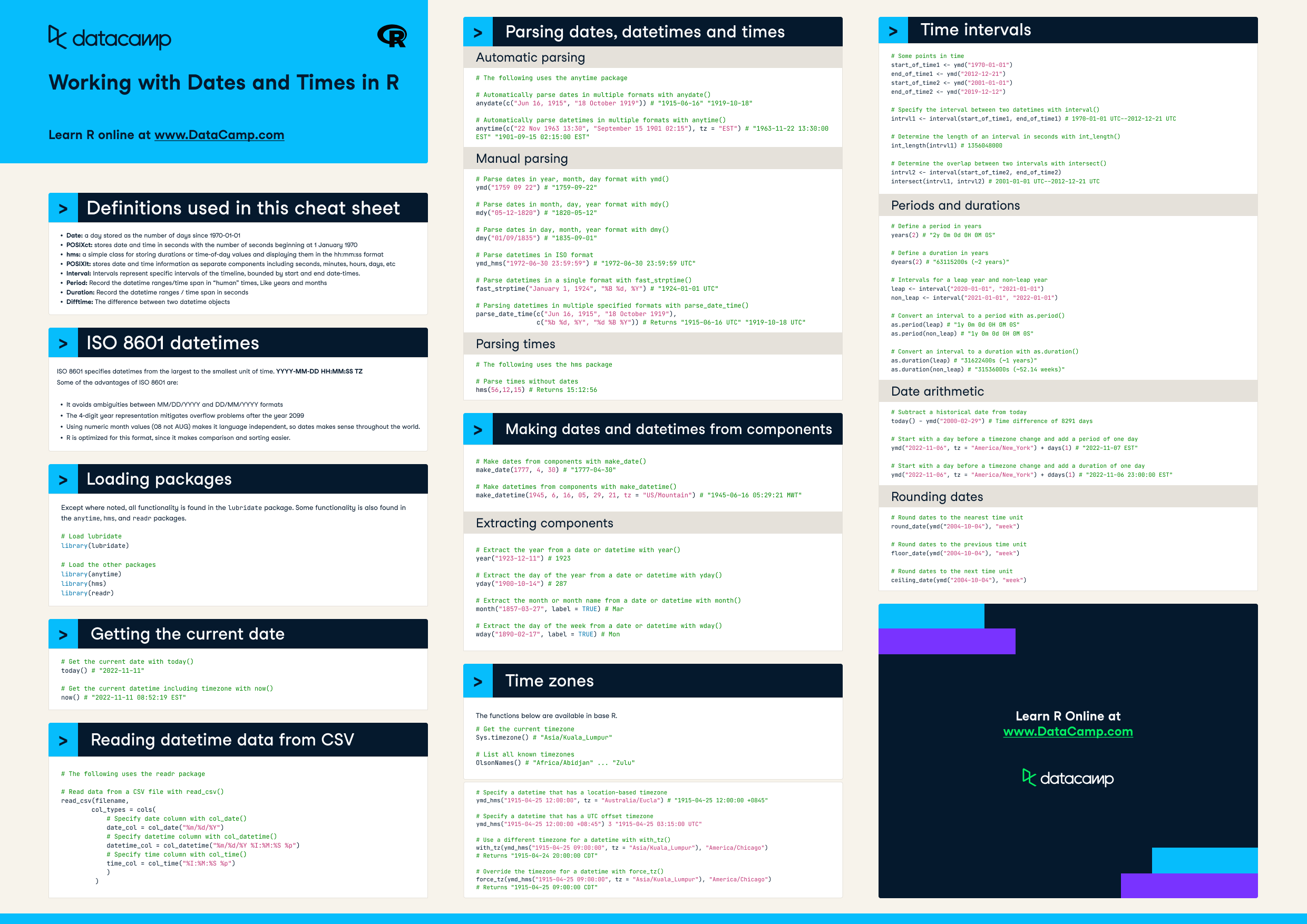Dates and Times in R Cheat Sheet
Welcome to our cheat sheet for working with dates and times in R! This resource provides a list of common functions and packages for manipulating, analyzing, and visualizing data with dates and times.
Dec 2022 · 1 min read
Have this cheat sheet at your fingertips
Download PDFHave this cheat sheet at your fingertips
Download PDFTopics
RelatedSee MoreSee More
cheat sheet
Text Data In R Cheat Sheet
Welcome to our cheat sheet for working with text data in R! This resource is designed for R users who need a quick reference guide for common tasks related to cleaning, processing, and analyzing text data.
Richie Cotton
5 min
cheat sheet
Working with Dates and Times in Python Cheat Sheet
Working with dates and times is essential when manipulating data in Python. Learn the basics of working with datetime data in this cheat sheet.
Richie Cotton
cheat sheet
The data.table R Package Cheat Sheet
The data.table cheat sheet helps you master the syntax of this R package, and helps you to do data manipulations.
Karlijn Willems
7 min
cheat sheet
xts Cheat Sheet: Time Series in R
Get started on time series in R with this xts cheat sheet, with code examples.
Karlijn Willems
5 min
tutorial
Utilities in R Tutorial
Learn about several useful functions for data structure manipulation, nested-lists, regular expressions, and working with times and dates in the R programming language.
Aditya Sharma
18 min
tutorial
The data.table R Package Cheat Sheet
The data.table cheat sheet helps you master the syntax of this R package, and helps you to do data manipulations.
Karlijn Willems
2 min
